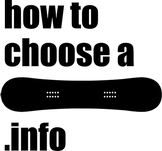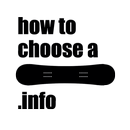Snowboard Bases
The base of the snowboard is (along with its edges) what's in contact with the snow, and it must glide as well as possible.
For Beginners
As an instructor I see lot's of beginners hoping they're boards wont glide that much so that they can go slower. Well, you will go slower if you're on a beginner level snowboard, the base of a beginners snowboard is typically extruded (the slower and cheaper type of snowboard base, the fast one is called sintered). Most beginners will prefer an extruded base, but you may want to get a board that will last, in that case maybe you should go with a sintered base because that "I want to go slow" feeling may not last that long, and specially because a board that's a bit faster is not a problem at all for learning, as long as the idea of being on a faster board messes with your confidence. To learn you should stay in mellow terrain anyway and you probably won't feel any special speed or acceleration from your faster board.
I also see lot's of rentals going with the "I want a slower board" thing and giving unwaxed boards to beginners, and that's when cheat hits the fan, an unwaxed snowboard base is never a good idea because more than even slower, it will glide more unevenly and unpredictably specially with terrain changes, which translates into a unnecessarily difficult learning experience. If you are lucky to get a snowy day on your first week, with an unwaxed board that luck may become a nightmare (a very tiring and frustrating one), the snow will stick to your board's base and the board won't move, literally! The snowboards base must glide as well as possible so that you can control it better, and for that to happen it has to be in good conditions and waxed. (check out the page snowboard tuning).
Resuming, worry more about the base being waxed than with the type of base.
Snowboard Base Materials
The base is the part of the snowboard with most influence on it's speed (it's a really important thing for racers and for anyone who loves speed, not so much for everyone else), it also has much influence in the snowboards weight, and is the part that takes more beatings (from ice, rocks, wood...). So the base is always a compromise between speed, weight and durability.
All snowboard bases start by being just small pellets, usually made from polyethylene. The base's quality and characteristics (including speed) are defined by the exact type of material and by the size of those pellets (smallest pellets = faster bases) along with the additives that may be used (other materials mixed whit the pellets, like graphite), and specially by the construction process, extruded or sintered.
Keep in mind that are different types of extruded bases and different types of sintered bases, they differ on density and on the materials and additives they're made of.
Extruded snowboard base
The pellets are melted and pressed together, at high temperatures, to the desired thickness and density, then cut to the board's dimensions. A cheaper process.
Slower and absorbs less wax, because it has few capillary holes or none at all.
Needs less maintenance (waxing). Because it soaks less wax, waxing becomes more about maintaining (hydrating) the base than about making it faster.
Easier to repair but less durable, more prone to damages, because of it's lower density.
slightly Lighter also because it's less dense than a sintered base.
Choose an extruded base it if you want a cheaper board and/or one that need less waxing and is easier to fix by yourself. Extruded bases are usually found in lower end snowboards.
Sintered snowboard base
The pellets are not melted, they're pressed together under a higher force to the desired density, then they are cut as needed. A more expensive process.
Faster and absorbs more wax, because it is more porous.
Needs more maintenance (waxing) to stay in good conditions, hydrated and fast. Because it's porous it's also more wearable.
Harder to repair but more durable, harder to ding (although still far from indestructible) because it's more dense.
slightly Heavier also because of it's higher density. However, this may be compensated with less thickness, once it's more resistant.
Choose a sintered base if you want a fast board and don't mind about (or even enjoy) waxing it more often. Sintered bases are usually found on higher end snowboards.
Graphite. It's conductivity helps dissipate the static charges that form between the base of the snowboard and the snow (which increase friction), so snowboards bases with graphite will be faster. They'll also soak more wax, so because of that too, graphite snowboard bases will be faster.
Non polyethylene bases
(soon)
Snowboard base Graphics
Four options here:
Black or white snowboard base. This snowboard base is the most durable and the easiest to repair and to keep in good shape, both functionally and aesthetically.
Transparent base with image underneath. As easy to repair as a black snowboard base for functionality but not as easy to keep the aesthetics. When you repair dings on this snowboard base with a lighter the filling material tends to get black (burnt) spots.
Colored snowboard base. As easy to repair for functionality as the previous 2 snowboard bases. Even harder to keep pretty than a transparent base, specially because it's very hard to find P-tex in any color than black, white or transparent. If you use transparent you get the same problem as with transparent snowboard bases, afore mentioned.
Snowboard base with various sheets. Each color is a separate sheet, a separate base part. This kind of graphics on a snowboard base make a snowboard more expensive and more prone to damage, like parts of it being ripped of. It's common to see cheaper, older snowboards with a colored logo on a black base where some of the letters (the individual snowboard base sheets) are missing.

